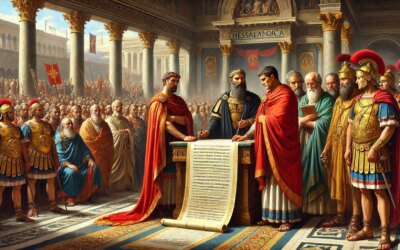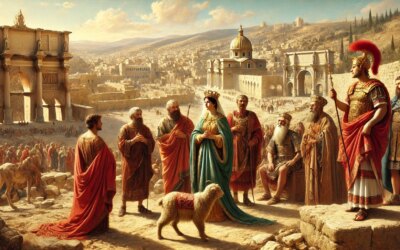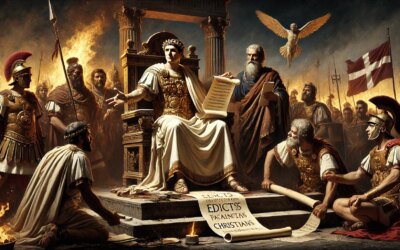Introduction: A World in Theological Turmoil
By 381 AD, the Roman Empire was no longer simply a political entity—it was a theological battleground. Decades after Constantine’s conversion to Christianity, doctrinal disputes threatened to fragment the Church and, with it, imperial unity. Emperor Theodosius I, recognizing the danger, convened the First Council of Constantinople to restore order, reaffirm orthodoxy, and solidify the role of Christianity as the empire’s spiritual cornerstone. The council would not only reshape theology, but define the creed of Western civilization.
The Religious Landscape of the Late Empire
In the wake of the Council of Nicaea (325 AD), Arianism—a doctrine denying the full divinity of Christ—continued to spread, particularly in the Eastern provinces. While Nicene orthodoxy had imperial support under Constantine, his successors wavered. By the time Theodosius assumed power in 379 AD, the Eastern Church was deeply divided, with rival bishops and sects competing for influence. Theodosius, a staunch Nicene Christian, sought to restore unity through imperial authority and ecclesiastical consensus.
Theodosius: Defender of Orthodoxy
Theodosius I, born in Hispania and trained as a soldier, ascended to the throne during a time of crisis. His military victories secured the Danube frontier, but it was his religious policies that defined his legacy. In 380 AD, he issued the Edict of Thessalonica, declaring Nicene Christianity the official faith of the Roman Empire. This edict laid the groundwork for the Council of Constantinople, convened the following year to resolve lingering disputes and legitimize the Nicene position.
Convening the Council
The council opened in May 381 AD in the capital of Constantinople. Attended by approximately 150 bishops, mostly from the Eastern Church, the gathering was notably absent of Western representatives. Yet it carried the weight of imperial endorsement. Under the guidance of bishops like Meletius of Antioch and later Gregory of Nazianzus, the council sought to affirm the divinity of the Holy Spirit, condemn Arianism, and revise the Nicene Creed to include a fuller Trinitarian theology.
Debate and Decision
Key theological issues included the nature of the Trinity, the divinity of the Holy Spirit, and the legitimacy of various episcopal appointments. The council condemned Macedonianism—a heresy that denied the divinity of the Holy Spirit—and reaffirmed the co-equality of the Father, Son, and Holy Spirit. The revised creed, though now commonly called the Nicene Creed, was crafted largely in Constantinople. It became the standard declaration of faith in both the Eastern and Western churches.
The Rise of Constantinople
The council also addressed ecclesiastical hierarchy, elevating the Bishop of Constantinople to second in rank after the Bishop of Rome. This decision reflected the city’s growing political and spiritual prominence and foreshadowed future tensions between Eastern and Western Christianity. Though Rome protested this arrangement, the groundwork was laid for the eventual split between the Catholic and Orthodox churches.
Aftermath and Imperial Enforcement
Theodosius enforced the council’s decrees with characteristic determination. Heretical bishops were deposed, churches were handed over to Nicene clergy, and dissenting sects were suppressed. While some scholars criticize this period for its repression of theological diversity, it undeniably forged a unified Christian identity that would endure for centuries.
Legacy of the Council
The Council of Constantinople marked a turning point in both religious and imperial history. It solidified the Trinitarian doctrine that still defines mainstream Christianity, established Constantinople’s ecclesiastical prestige, and reinforced the emperor’s role as arbiter of faith. The decisions made in 381 AD shaped not only the Church, but the very fabric of Roman—and later European—civilization.
Conclusion: Creed and Crown
In 381 AD, amid gilded mosaics and candlelit debates, the Roman Empire fused theology and statecraft at the Council of Constantinople. Theodosius I, once a general on distant frontiers, emerged as the architect of orthodoxy. His council offered more than dogma—it offered a vision of unity in a world splintered by belief. Through scrolls, sermons, and imperial will, the Christian creed was refined, the empire consecrated, and history indelibly altered.






